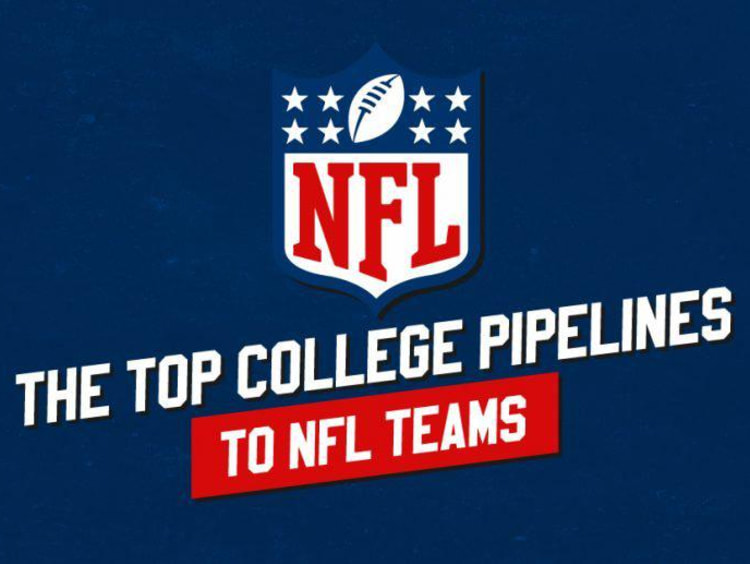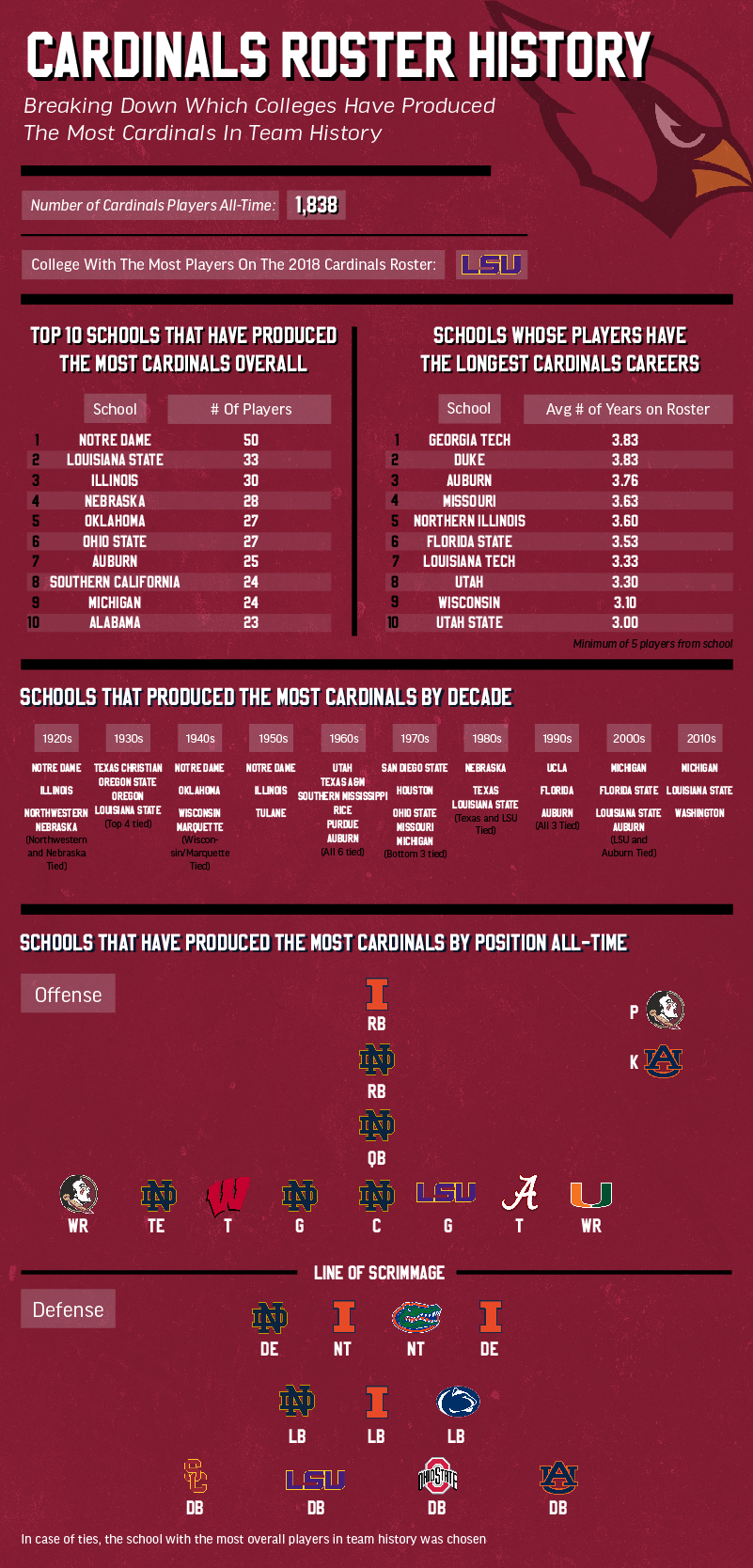History of Colleges Most Represented on NFL Rosters

Every April, a new crop of young men try to make the leap from college to the pros where they will try to carve out a career for themselves in the NFL. It’s one of the most exciting times of the year for football fans around the country.
Just because we don’t have a college team of our own here at Grand Canyon University doesn’t mean that we aren’t caught up in the excitement and talent infusion the draft brings. After all, our hometown Arizona Cardinals have the first overall pick!
Beyond that local rooting interest, there is at least one Grand Canyon graduate that has a major impact on the fortunes of an NFL franchise, even if most of his work takes place away from the field. That would be Grand Canyon University Athletics Hall of Fame member and Antelopes basketball legend Kevin Warren, who has been an executive for multiple NFL teams stretching back to the 1990s. At present he serves the Minnesota Vikings as their Chief Operating Officer, making him one of the highest-ranking executives in the organization with the 18th pick in this year’s draft.
The combination of our local NFL squad picking at the top of the draft, an accomplished alum serving in a major leadership role for a different team, and our general interest in seeing college students start their careers after school really got our team thinking about what it means for these student-athletes who are preparing to drop the “student” part of that moniker. We are particularly interested in which colleges have been the most successful at sending players to the pros.
Once we started looking through historic roster data for various NFL teams, we really didn’t want to stop. So we didn’t.
Eventually, we had gathered data on every player to ever appear on an active NFL roster, including their position, who they played for, how long they played in the league and of course which college they attended. Using this data we were able to illustrate some key data points for every franchise in the league, as well as the league as a whole.

To explain what we did, we can’t think of a better team to spotlight than the aforementioned Arizona Cardinals, owners of the top overall pick this weekend.
One of the first things we found was how many players have ever donned the team’s uniform throughout the entirety of the franchise’s history. As one of the oldest teams in the league, the Cardinals have one of the largest rosters of players all-time, clocking in at over 1,800! Of those 1,800+ players, the school that has produced the most Cardinals is Notre Dame, with an even 50, well ahead of LSU in second place. Notably, however, LSU was the school most represented on the 2018 Cardinals roster.
We also looked at career length to find which college’s players have the longest average careers on different NFL teams. We limited this data to schools who have had at least five players make the all-time roster to weed out one-off outlier players. For the Cardinals, this means that Georgia Tech and Duke footballers last the longest with the franchise at nearly four seasons on average.
We also looked at the three college teams who had the most players join each professional team in every decade. For the Cardinals, this evaluation showed us that there was a particularly strong connection to Notre Dame from the 1920s to the 1950s when the team was located in nearby Chicago. From 1960 to 1987, the franchise was located in St. Louis, and that westward move brought with it more players from the Southwest and Great Plains regions, as players from schools like Utah, Missouri and Nebraska starting appearing on the field more for the NFL franchise. Interestingly, the 1988 move to Phoenix marked an end to regionality having an outsize influence on roster decisions, with Michigan Wolverines playing for the Cardinals at a greater clip than any other school in both the 2000s and 2010s.
Finally, we broke out every player by position and school to find which schools have produced the most players at specific positions for every NFL team. Using traditional offensive and defensive formations as our guide, we were able to create a unique starting lineup of college football teams, using their logos as stand-ins. Here is another area where Notre Dame’s influence is readily apparent, as they are the top school at seven of the 24 positions we evaluated, including key positions such as quarterback and running back.
We know most people aren’t fans of the Arizona Cardinals, so we went ahead and made a similar graphic for every other team in the National Football League, which you can click through in the above slideshow.
We also took the combined data we had gathered and made a slightly different graphic for the entire history of the NFL.
In terms of schools that have produced the most NFL players all-time, Notre Dame just edged out USC for the top spot, with Ohio State joining those historic programs as the only ones to send more than 400 players to the NFL. In terms of 2018 rosters, however, it comes as no surprise that Alabama, the premier program in college football over the last decade, leads the way with 53 players, enough for an entire official NFL roster, suiting up during the most recent season.
In terms of players by decade, the NFL relied heavily on schools from the Midwest such as Notre Dame and Minnesota in the early days, before shifting their focus out west to USC in the 70s and 80s before settling into a varied approach that has seen schools from the Midwest, California, and the Southeast regularly headlining NFL rosters over the last 30 years.
No matter who you root for, the NFL Draft represents an exciting time in the lives of football fans, one that brings the promise and potential of new talent and new hopes for on-field success. We will be watching alongside our fellow fans to see how it all unfolds and watch the young men getting drafted move on to the next phase of their lives. And while not everyone can get their name called to start a professional football career, everyone can set themselves up for a successful career in another field with the help of a quality education like the one you will receive at Grand Canyon University.
The views and opinions expressed in this article are those of the author’s and do not necessarily reflect the official policy or position of Grand Canyon University. Any sources cited were accurate as of the publish date.


